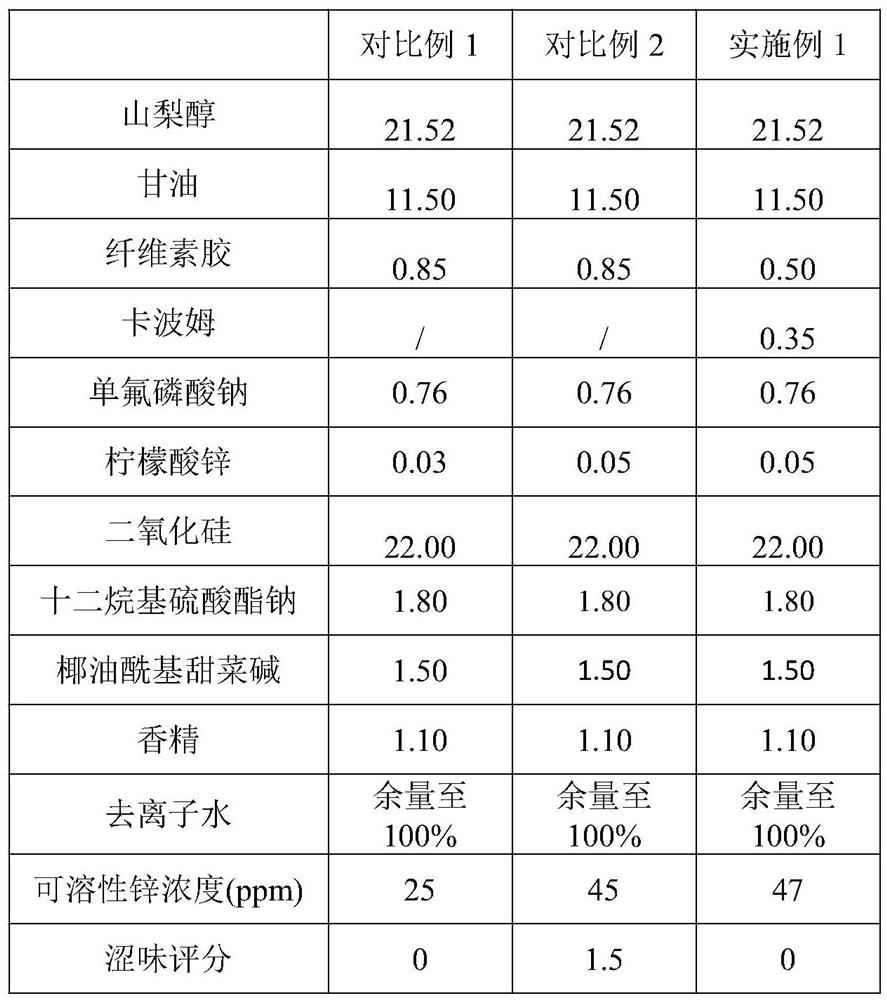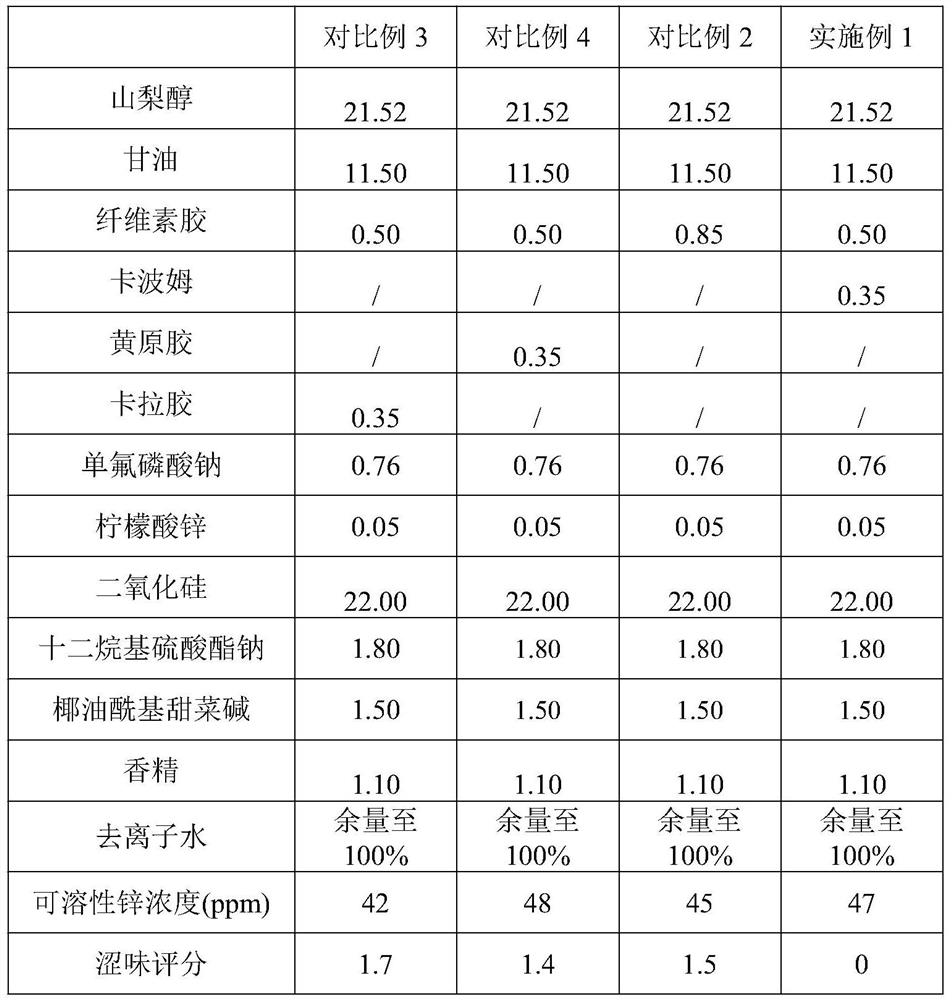Oral care composition and application
An oral care and composition technology, applied in the field of oral care, can solve problems such as unpleasant astringent taste and restrictions on the use of zinc salts, and achieve the effect of reducing astringent taste and increasing residence time
- Summary
- Abstract
- Description
- Claims
- Application Information
AI Technical Summary
Problems solved by technology
Method used
Image
Examples
specific Embodiment
[0080] Evaluation method of astringent taste
[0081] 1) Establishment of the evaluation team
[0082] Select 30 qualified sensory evaluators with reference to GB / T 16291.1-2012 and GB / T12311-2012;
[0083] 2) Correction of the astringency evaluation standard by the scoring standard evaluator
[0084] Accurately weigh 0.010g, 0.025g, and 0.05g of grape tannins, add them into 500ml of pure water and stir evenly, then dilute to 1L with pure water. Strength is 0 points;
[0085] Take 20 mL of the above-mentioned reference sample solution, gargle fully for 30 seconds, and then spit it out (do not gargle with water), and evaluate the intensity of the astringent taste inside the cavity at this time. Repeat the measurement of the reference sample three times, and take the average of the three results, so that the evaluators can remember their own scoring strength. Then, according to the comprehensive re-scaling method stipulated in the value estimation method of the national stan...
Embodiment 1
[0088] Embodiment 1, comparative examples 1-2
[0089] According to table 1 formula configuration comparative example 1-2, embodiment 1:
[0090] Table 1 (percentages in the form are percentages by weight)
[0091]
[0092] As can be seen from Table 1, only a thickener of cellulose gum was added in Comparative Example 1, and the detectable concentration of soluble zinc in the formula was 25ppm; while in Comparative Example 2, the detectable concentration of soluble zinc increased To 45ppm; Embodiment 1 increases the carbomer on the basis of comparative example 2, simultaneously for the viscosity of stabilizing paste, reduces the consumption of cellulose glue, and the detectable concentration of soluble zinc is the same as that of comparative example 2 is equivalent to 47ppm.
[0093] Judging from the astringent taste evaluation results, when the detectable concentration of soluble zinc is only 25ppm, the subject does not feel the astringent taste of the paste; but when th...
Embodiment 2-6, comparative example 5
[0101] According to table 3 formula configuration embodiment 2-6, comparative example 5:
[0102] Table 3 (percentages in the form are percentages by weight)
[0103]
[0104]
[0105] As can be seen from Table 3: the formula of comparative example 5 does not add carbomer, while the content of carbomer in examples 2-6 is respectively 0.1%, 0.5%, 0.8%, 1.0%, 1.1%, the solubility of the six groups of formulas The detectable concentration of zinc is basically the same, but with the increase of the amount of carbomer added in the formula, the astringency of the formula is continuously decreasing, but when the added amount reaches 0.8%, the downward trend is obviously slowed down. Moreover, it was found in the paste preparation process that when the formula carbomer was added in an amount greater than 1.1%, the agitation of the paddle encountered resistance that was difficult to overcome, and the paste was not easy to pack and extrude in the later stage.
PUM
 Login to View More
Login to View More Abstract
Description
Claims
Application Information
 Login to View More
Login to View More - R&D
- Intellectual Property
- Life Sciences
- Materials
- Tech Scout
- Unparalleled Data Quality
- Higher Quality Content
- 60% Fewer Hallucinations
Browse by: Latest US Patents, China's latest patents, Technical Efficacy Thesaurus, Application Domain, Technology Topic, Popular Technical Reports.
© 2025 PatSnap. All rights reserved.Legal|Privacy policy|Modern Slavery Act Transparency Statement|Sitemap|About US| Contact US: help@patsnap.com



